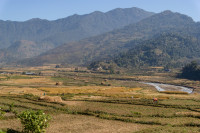Opinion
Gender pay gap
What we can learn from global practices to reduce inequality in our workforce
Tara Kanel
With significant progress on gender equality globally, gender imbalance in terms of the number of women employees in the workforce is not a global phenomenon any more. In Australia for example, 49 percent employees are women.
However, balancing the workforce by gender remains a challenge in many countries such as Nepal that have made little progress in gender equality.
Gender pay gap, on the other hand, is a global phenomenon. Even countries with equal representation of women in labour markets are still struggling to eliminate it. A gender pay gap in advanced countries is very surprising. Take Australia, where women outnumber men at universities, where they even score higher in tests, and where their number in the labour market is almost equal to that of men. There is however a huge gender pay gap, currently standing at 18 percent among full-time employees. Put another way, an average Australian woman earns only 82 percent of what an average Australian man earns. Similarly, the gender pay gap in the US and the UK stands at 17.5 and 17.4 percent respectively. In South Asian countries including Nepal, although there is a huge gender pay gap, it is impossible to quantify the gap due to data limitation. There is a strong need to analyse the context and determinants of this pay gap in order to empower women economically and further their equality and dignity.
Some determinants
One of the determinants is gender segregation of work. Globally, labour markets are highly segregated in terms of the occupation that men and women choose according to traditional gender norms. An Australian study showed that female employees significantly outnumber men in health care, social welfare, education and recreation. For example, nine out of 10 nurses in Australia are women. Men dominate in the sectors of engineering, construction and mining. The same study demonstrated that women-dominated occupations tend to have lower pay. A woman working in a female-dominated occupation, on average, earns 67,808 Australian Dollars (AUD) whereas her counterpart with similar qualification working in a male-dominated occupation, on average, earns AUD 76,702 annually.
In Nepal, although we do not have exact data to demonstrate the prevalence of gender segregation, we can see clearly that some professional sectors such as health care, domestic work and recreation, which offer lower pay, are dominated by women. These roles are based on the traditional view of women as caring and nurturing.
Low representation of women in higher positions and the government is another factor contributing to gender pay gaps globally. A recent study conducted in Australia established a close association between the proportion of women serving in leadership positions and unequal pay. The study shows that the gender pay gap narrows with a rise in the number of women in leadership roles. According to this study, health care, social assistance, and education and training sectors in Australia are characterised as having a high number of women in leadership roles, and correspondingly a lower gender pay gap. In contrast, construction, mining and agricultural sectors have low representation of women in leadership positions leading to a high pay gap. A large number of other studies conducted around the world demonstrate a positive relationship between improved gender diversity in governance and better decision making, better organisational performance, a decrease in corruption, and an increase in organisations’ social responsiveness.
Remedial measures
Gender pay gap may be a global challenge. However, it is not impossible to reduce and ultimately eliminate this problem. Many countries including Australia are proactively reducing the gap with the help of laws. In Australia, it is the ‘Work Place Gender Equality Act 2012’. The new law does not only promote equal opportunity in the workplace, but also fosters consultation between employers and employees on gender issues. The law also has an enforcement arm, the Work Place Gender Equality Agency (WPGEA), to which all private sector employers are obliged to report annually on five key gender equality indicators.
The key gender indicators are gender composition of the workforce, gender composition of governing bodies, equal remuneration for women and men, organisational practices regarding flexible working arrangements and supporting the employees with family and caring responsibilities and finally the existence of a sex-based harassment and discrimination prevention strategy or policy.
Where are we in Nepal?
The main problem in Nepal is that we do not know the gender dimensions of our labour market. We do not have any data collection mechanism to learn the proportion of men and women in the workforce. Therefore, our first priority should be to establish a mechanism to collect appropriate information—from the bottom level to the governance level. Once we know the exact situation, we can analyse the data followed by the formulation of proper policies and strategies.
Like its predecessor, Nepal’s new constitution prohibits gender-based discrimination with respect to remuneration and work-related benefits. This constitutional provision means same wage for same work. However, our problem is not only discrimination in wages but also inequality in terms of getting access to work. Therefore, the foremost priority is providing men and women with equal access to work at all levels.
There are a number of root problems connected with patriarchal norms and values, such as men being considered more capable than women to perform organisational work and employers therefore preferring to hire them. Women are considered to be entertaining and nurturing, thus they are more likely to be hired in these sectors. And women are considered incapable of making decisions, thus they are hardly appointed at decision-making levels. Because of these reasons, the number of females in our workforce is nominally low, and the women who work are employed at lower levels.
The present need is to have roughly the same number of men and women in each sector of our workforce. For disrupting current practices associated with patriarchal norms and values, we need a strong policy and monitoring mechanism. The Australian system of making it mandatory for all organisations to report on key
indicators will probably be effective in Nepal’s context as well. This includes setting up an agency to monitor the overall situation of organisations, and a provision of mandatory annual reporting by the organisations to the agency on key gender indicators. It is the right time to discuss this issue as the country is transitioning to a republican democracy with the implementation of the new constitution.
Kanel, a freelance policy analyst, holds a Master’s in Social Policy from the University of Melbourne, Australia




 18.12°C Kathmandu
18.12°C Kathmandu










